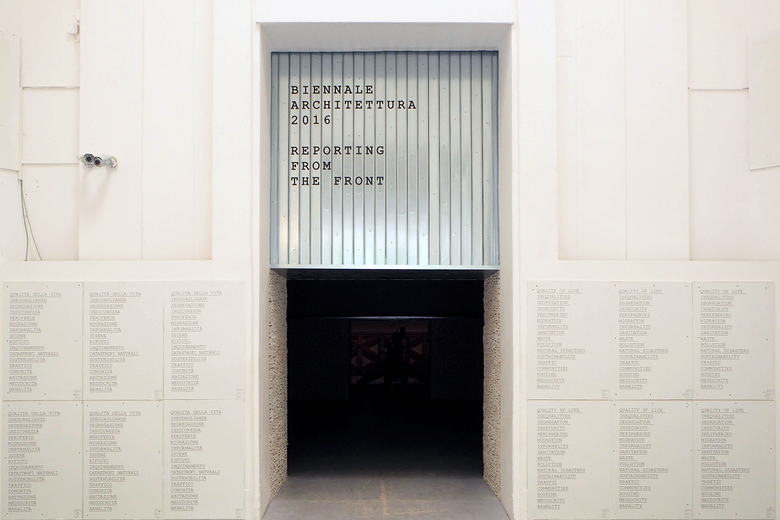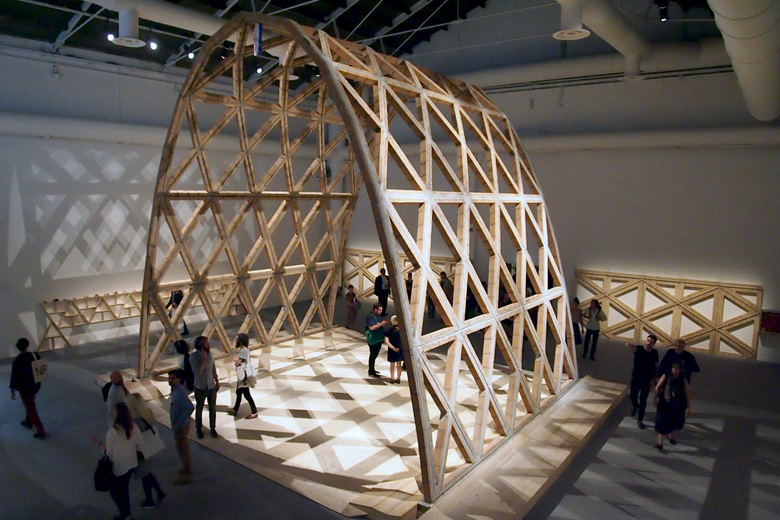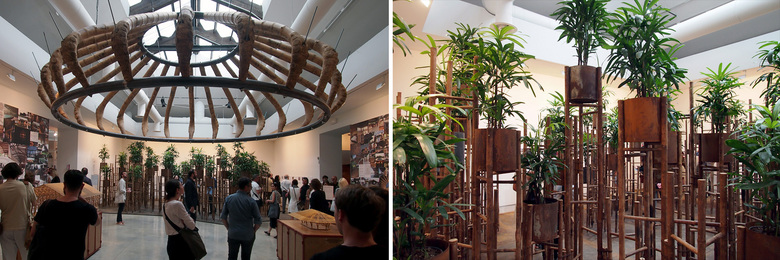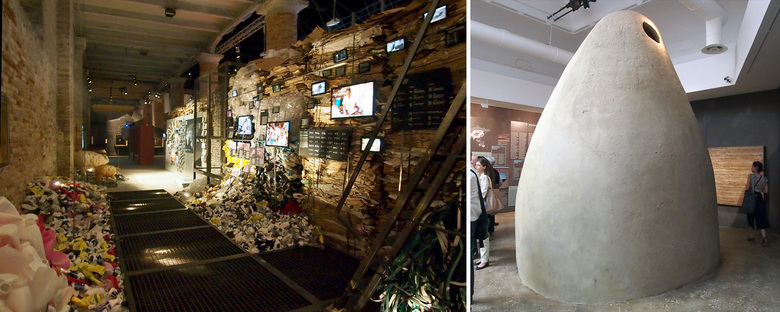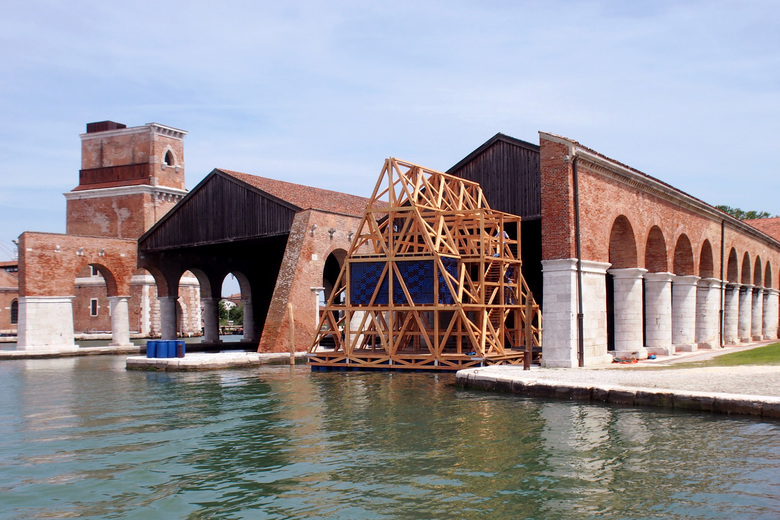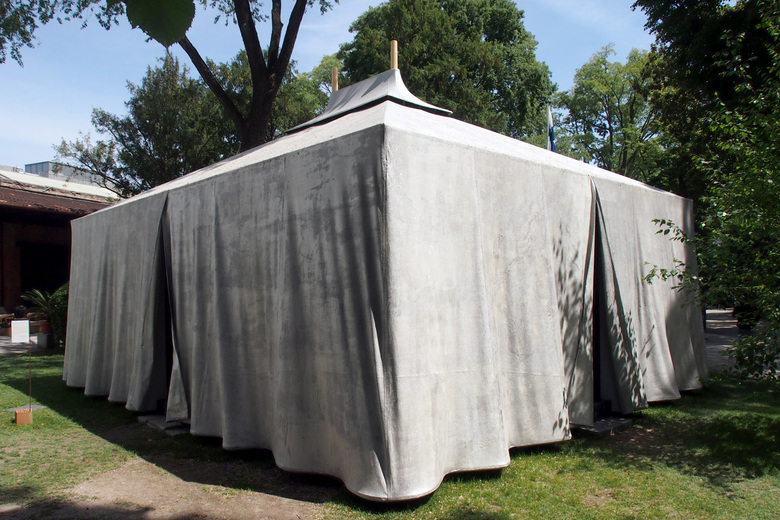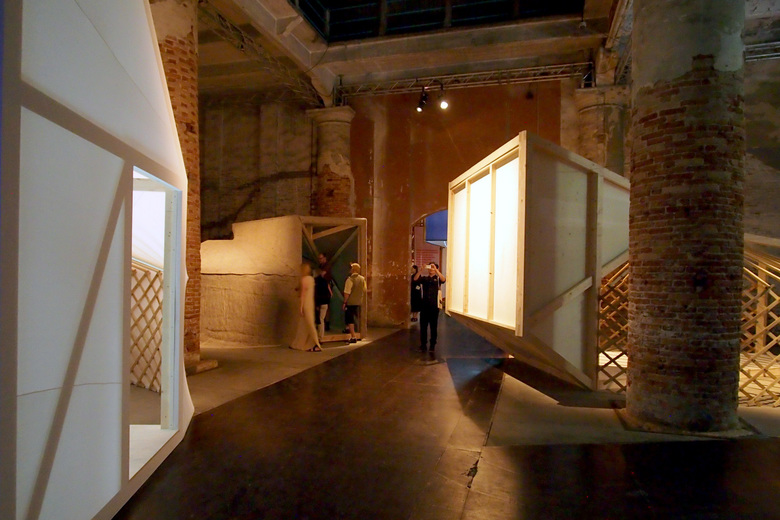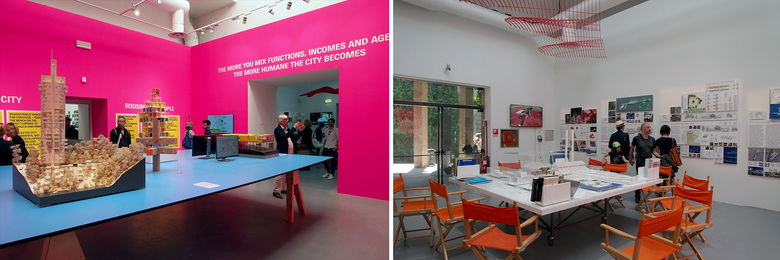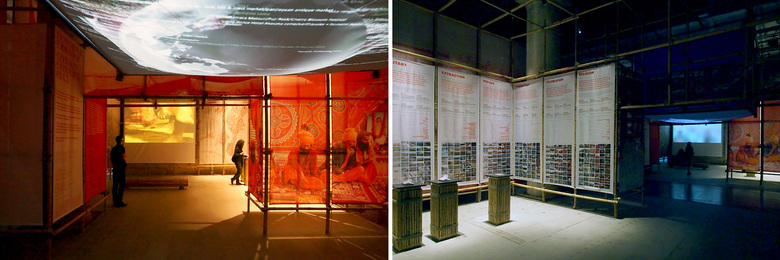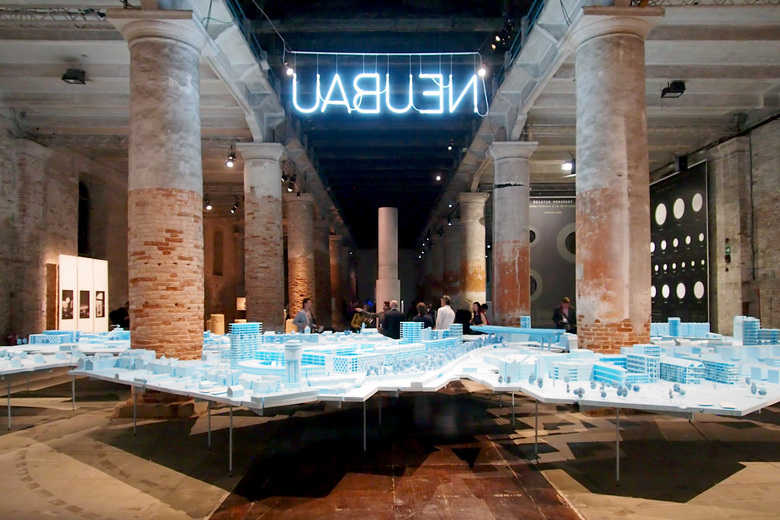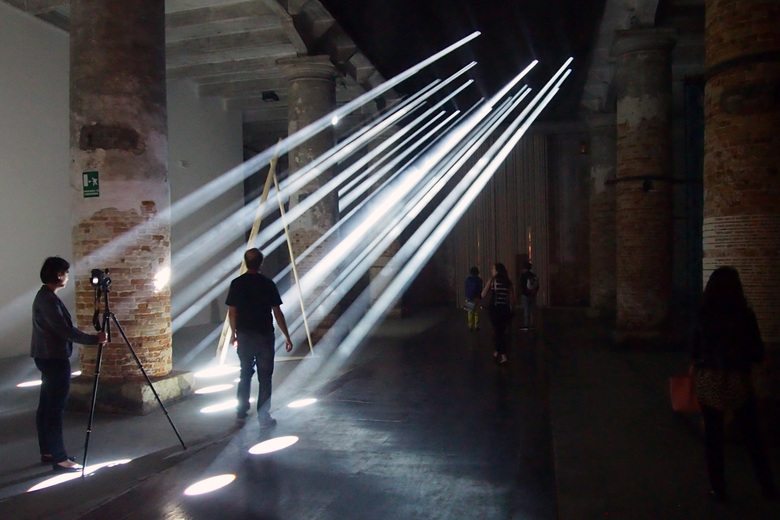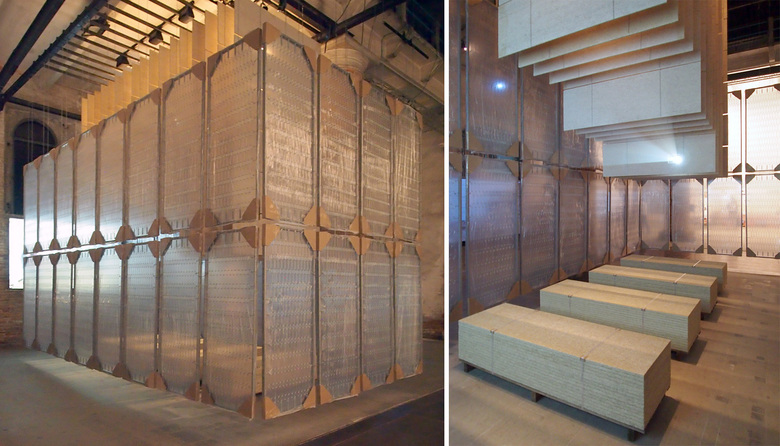Reporting on 'Reporting from the Front'
Our first of three features on the three main components of the 2016 Venice Architecture Biennale – the Reporting from the Front exhibition, the National Pavilions, and the Collateral Events – focuses on Alejandro Aravena's contribution, Reporting from the Front.
In the words of Chilean architect Alejandro Aravena, Director of the 15th International Architecture Exhibition, the theme Reporting from the Front is "about sharing with a broader audience the work of people who are scrutinizing the horizon [and] looking for new fields of action." In putting together the exhibition, Aravena defined a number of themes (sustainability, segregation, pollution, waste, migration, peripheries, etc.) and managed to gather 88 participants to present proposals that address challenges aligned with these themes. Proposals did not need to be buildings, but in the end the contributions were meant to "address a problem that matters and for which quality architecture made a difference."
Navigating through 88 projects spread across two sites – the Central Pavilion of the Giardini and the Arsenale – over the course of the Biennale's two preview days was not an easy task; the proposals are highly varied in terms of subject and execution. Nevertheless, given Aravana's precise direction – stemming from his firm Elemental's work on incremental housing and other socially engaged projects – some thematic strands could be ascertained. A few of them follow as a way of presenting highlights from Reporting from the Front. Certainly these are not the only thematic strands to be found among the many projects (any exhibition is a large matter of interpretation, after all), but they stand out as strongly aligned with the overriding idea of the exhibition.
Building with What Is Available
As explored the other day, one common trait found among a few installations is the construction of masonry vaults, which include Norman Foster’s design for Droneports in Africa, the Block Research Group’s unreinforced stone vault, and Gabinete de Arquitectura’s dramatic brick and mortar archway. The last impressed the awards jury enough for them to honor it with the Golden Lion for the Best Participant in the 15th International Exhibition - Reporting from the Front. The structure is an impressive entrance to the exhibition in the Central Pavilion, one that is based on the ubiquitousness of brick in the firm's native Paraguay. Yet it is all the more impressive when considered that the construction was designed to be built by almost anyone, with what Gabinete de Arquitectura's Solano Benítez calls "brick and unqualified labor."
Material experiments in the exhibition are hardly limited to masonry; they can be found as well in the application of numerous natural and uncommon materials. Both Simón Velez from Colombia and Vo Trong Nghia from Vietnam, who share a room in the Central Pavilion, exploit the potential of bamboo, the wondrous grass that achieves tensile strengths higher than steel. Velez suspends a rhizomic structure made from large pieces of bamboo in the room, while Nghia uses smaller pieces of bamboo as an armature for growing plants and trees. The latter, in particular, gives the room an earthy odor that is a strong enough argument for architects to use the material.
Bamboo's antithesis can be found in the Arsenale, where Poland's Hugon Kowalksi (with Marcin Szczelina) has applied the lessons from his thesis project in Mumbai: build with trash as a way to "fight ... the overwhelming flood of waste."
In the room next door to Simón Velez and Vo Trong Nghia, German architect Anna Heringer, in collaboration with Martin Rauch and Andres Lepik, has covered the floor with rammed earth and built atop it a "monolithic mud nugget, rough inside, polished outside."
In the Arsenale, Wang Shu and Lu Wenyu of Amateur Architecture Studio have assembled mockups from construction sites for their buildings in China. The mockups convey clearly how their buildings reuse the materials of traditional Chinese buildings demolished as the country urbanizes. This technique is well known to people who have seen photographs of their buildings, but for those not fortunate enough to have visited the Ningbo History Museum or Xiangshan School, among other projects, the mockups offer an immediate experience of how in their hands old materials are creatively assembled for new uses.
Beyond Shelter
With Alejandro Aravena’s well known incremental housing projects vaulting him to the exclusive list of architects whose name is forever prefaced by "Priztker Prizing-winning architect," it’s no surprise the exhibition includes other architects' innovative solutions for housing, as well as schools and other building types, all geared to the common good.
In 2010 Kunlé Adeyemi started his firm NLÉ and a few years later he complted the Makoko Floating School for a community in Lago, Nigeria. For the exhibition he floated a replica of the school to the Arsenale in Venice, in the process winning the Silver Lion for a promising young participant in the 15th International Exhibition - Reporting from the Front.
Directly in front of the Central Pavilion is a square shelter draped in a flowing fabric, a form derived from tents in the refugee camps of Western Sahara. It is the contribution of Swiss architect Manuel Herz, who has devoted nearly a decade of his life to researching, documenting, and spreading the word on the architecture of the camps the Sahrawis have inhabited for 40 years. Although technically one of the 88 participations in the Reporting from the Front exhibition, it is intended as a National Pavilion of the Western Sahara, a nation in exile. With its placement in the Giardini, it admittedly has the presence of a National Pavilion, even if it is not an official one. Inside, Herz has covered the walls and ceiling with statistical maps and woven rugs by Sahrawi women, while Iwan Baan's photos of the camps adorn stands in the center of the space, drawing attention to the architectural qualities of the buildings and their public spaces.
Rural Urban Framework (RUF), the Hong Kong-based duo of Joshua Bolchover and John Lin, have for ten years devoted their efforts to improveing the quality of buildings in rural China for those left out of the urbanization process. Although their work to date has consisted primarily of institutional buildings, such as the Tongjiang Recycled Brick School and the Mulan Primary School, for this exhibition they focus on the ger structures of the nomadic people of Mongolia. RUF has responded to the way these groups have descended upon Ulaanbaatar, the capital of Mongolia, with their traditional dwellings but without receiving the necessary services to live together in one place. RUF proposes a strategy that "allows for the incremental evolution of the ger districts rather than their eradication."
Cities for All
A salient point in Aravena's exhibition is the assertion that "We will have to house a new city of 1 million people per week over the next 15 years" to adequately address the migration to urban areas. Therefore techniques on dealing with this influx, as well as the housing of people already in cities but not living at an agreeable standard, are presente in the exhibition.
At the end of the exhibition in the Central Pavilion, right next to the bookstore, is a room whose walls are bright pink, Richard Rogers's favorite color (he is seen often in a shirt of the same pink). The contribution of his firm, Rogers Stirk Harbour + Partners, is all about "saving the city" through policy changes, improved public spaces, and mass produced housing. The last is visible as models atop the blue table in the center of the room.
Next door to Richard Rogers's contribution is a room devoted to Renzo Piano's work as a lifetime senator of the Italian Republic. This location is fitting, given that Piano and Rogers designed the Centre Pompidou in Paris more than 40 years ago, but also because they are both tackling urban issues. Piano has his sights on "city outskirts" in his native Genoa, Italy, but also other cities around the world. Key to his work in Renzo Piano Building Workshop and in his governmental role is a participatory process, expressed through the table and chairs in the center of the room where conversations – planned and spontaneous – can take place.
In the Arsenale, India- and Boston-based architect and educator Rahul Mehrotra presents, with Felipe Vera, presents his research on "ephemeral urbanism" in India. The proposal stands in opposition to "informal urbanism," which is a transition to something else, arguing that permanent solutions are not always ideal. Fittingly, the installation – two rooms with models, images and data on the walls, and videos – is made from a bamboo structure that can be disassembled and reassembled elsewhere; an expression of ephemeral urbanism at the scale a single building.
Germany's BeL Sozietät für Architekter has inserted a huge blue-foam model amongst two of the Arsenale's columns. The firm is known for the self-built housing they realized for the IBA Hamburg in 2013, where they designed a five-story concrete frame that is completed by the owners when they move in. The project is the German, multi-story equivalent of Aravena's incremental housing in Chile. Looking at migration into Germany, BeL's Biennale proposal, "NEUBAU," expands the self-built approach to four urban districts, combining "scientific research with propositional fiction."
Etc.
Not all contributions in Reporting from the Front fit into evident thematic strands. Here is a selection of notable exhibits that are fairly singular.
One of the most immediately appealing contributions are the parallel rays of light by Transsolar with Anja Thierfelder. As documented earlier, their Lightscapes installation brings to mind Jean Nouvel's design for the Louvre Abu Dhabi, where a perforated dome brings a "rain of light" to the spaces below, activated by the dust particles and sand that permeates the air.
Next the to Stirling Pavilion in the Giardini sits the maze-like intersection of circular walls created by Chile’s Pezo von Ellrichshausen. Articulated in drawing and model form in last year's Finite Format exhibition, the pavilion adds to their exploration of how a highly complex series of spaces can be created from the simplest of geometries.
One of the less than a handful of contributions from the United States among the 88 participants in Reporting from the Front is Rural Studio, Auburn University's design-build studio founded by Samuel Mockbee and D.K. Ruth in 1993, now headed by Andrew Freear, and based in Newbern, Alabama. Rural Studio's contribution is a theater showing a film on the influential school. Walls are formed by flat-packed box springs still in their wrappers, while stacks of MDF serve as seating and ceiling panels. It is maximum effect with the minimum of means, with materials from the installation to be donated to a local community after the Biennale.
Lastly, Peter Zumthor, who has a knack for never repeating himself on his commissions, has contributed a puzzling installation inside the Arsenale that consists of a scale model of LACMA (Los Angeles County Museum of Art), a raised walkway lined with hung garments covered in a rainbow of colors, and a sound piece by artist Walter de Maria. The Swiss architect’s explanation is minimal, leaving its meaning up to the visitor. This writer sees the installation as an expression of Zumthor’s design process, particularly in regards to LACMA, when sensation and movement are considered before architectural materials are determined.
